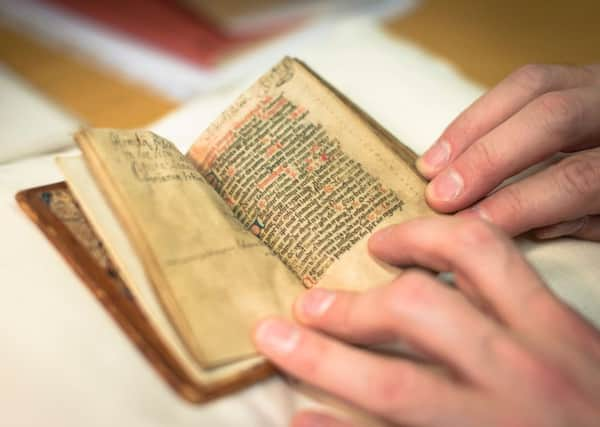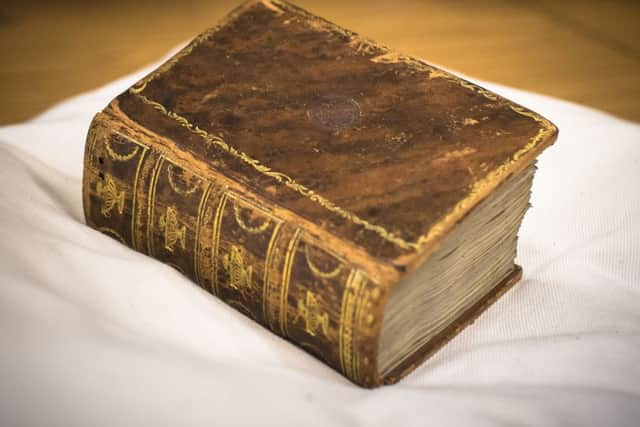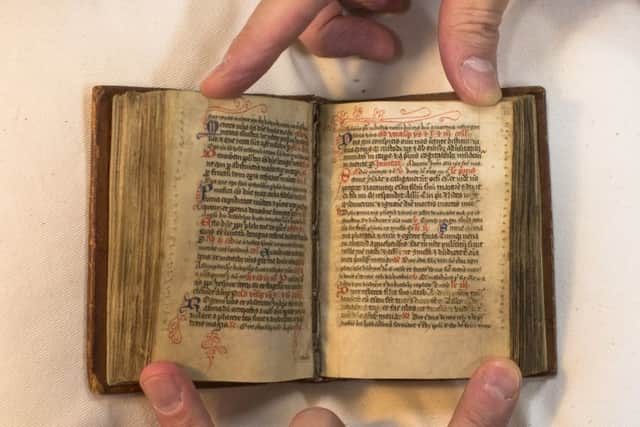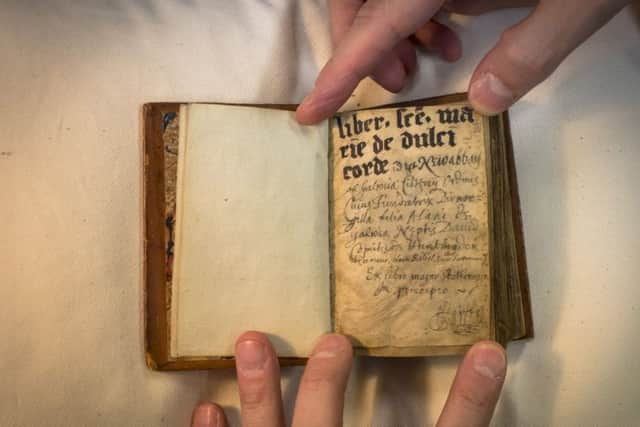Rare 14th century Scots manuscript snapped up by National Library


The monastic treasure linked to a ruined monastery in Dumfriesshire has been snapped up by the National Library of Scotland after coming under the hammer overseas.
Experts there have described the recovery of the missing prayer book as the most important acquisition of its kind for three decades.
Advertisement
Hide AdAdvertisement
Hide AdThe early 14th-century breviary, the origins of which can be easily traced to the historic Sweetheart Abbey, near Dumfries, is said to be an extremely rare example of a medieval religious manuscript written and used in Scotland.


Although the manuscript had been mentioned in various historical records, it was feared that it would never be recovered.
It is expected to go on public display at the library in Edinburgh once it has been conserved and researched.
Experts say the entire volume from what was to become the last Cistercian monastery to be built in Scotland has survived in a “remarkably good condition”, with 200 vellum leaves intact. It contains the text for many of the monastic prayers used during the
medieval era in Scotland.


The Sweetheart Breviary, as it has been described by experts at the library, was written in Latin between 1300 and 1350 in what was to become the last Cistercian monastery to be built in Scotland.
The monastery was founded in 1273 by Lady Dervorgilla of Galloway in memory of her husband Lord John Balliol. It was given its name by the monks after she was laid to rest in 1290 next to his embalmed heart – she had carried it everywhere with her in an ivory casket after his death in 1268. The breviary’s last known whereabouts were in 1715 when it was described in the printed catalogue of a Yorkshire historian and antiquarian, Ralph Thoresby. It resurfaced last year at the Dorotheum auction house in Vienna. Although the National Library was alerted to its impending sale, it was outbid by a US manuscripts dealer.
However, the breviary was subsequently offered for sale to the library and it managed to raise the $100,000 (about £70,000) needed to clinch the deal in just weeks by appealing to donors and backers.
Kenneth Dunn, curator of manuscripts at the National Library of Scotland, said: “The real detective work on the manuscript was done by the staff at the saleroom at The Dorotheum. They identified it as being from Sweetheart Abbey. Now that we own it, we will be trying to trace where it has been since 1715. We don’t know where it has come from recently.
Advertisement
Hide AdAdvertisement
Hide Ad

“The auction house may have to respect a confidentiality agreement, but we will have to try to find out. It is such an intriguing story. All the writing on medieval monastic manuscripts in Scotland in the last 300 years has indicated it was known this breviary existed, but nobody knew where it was and it might even have been destroyed. We will now be trying to piece together where it has been.”
The breviary, which features a number of Scottish saints, is linked to the abbey by an inscription stating: “Liber sanctae Mariae de dulci corde [a book of St. Mary of Sweetheart]”.
Mr Dunn added: “The effectiveness of the Reformation was such that a vast amount of the architectural and manuscript heritage of the medieval church was lost.”
Scotland’s National Librarian John Scally said: “We are delighted to have made this significant addition to the national collection. It is a rare survival that will shed light on our collective past.”